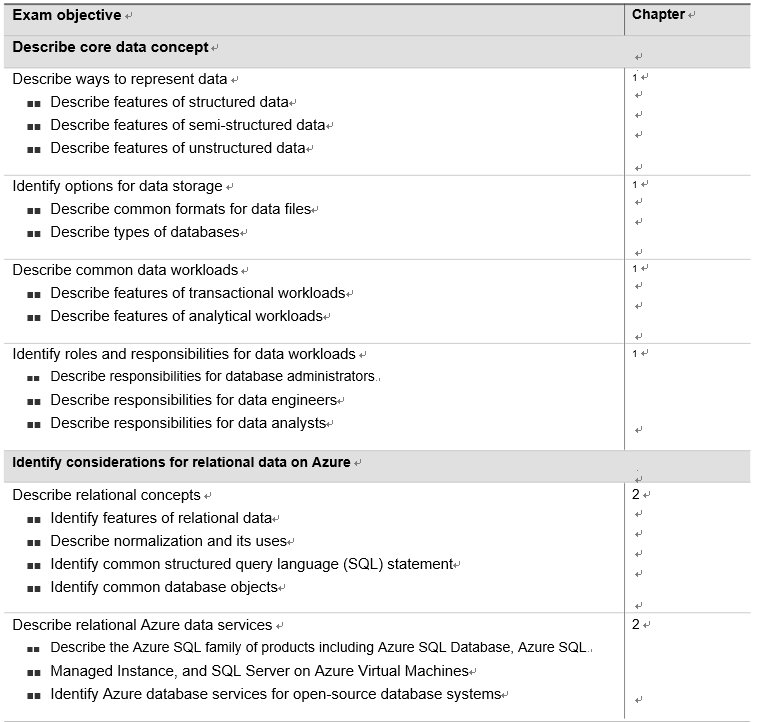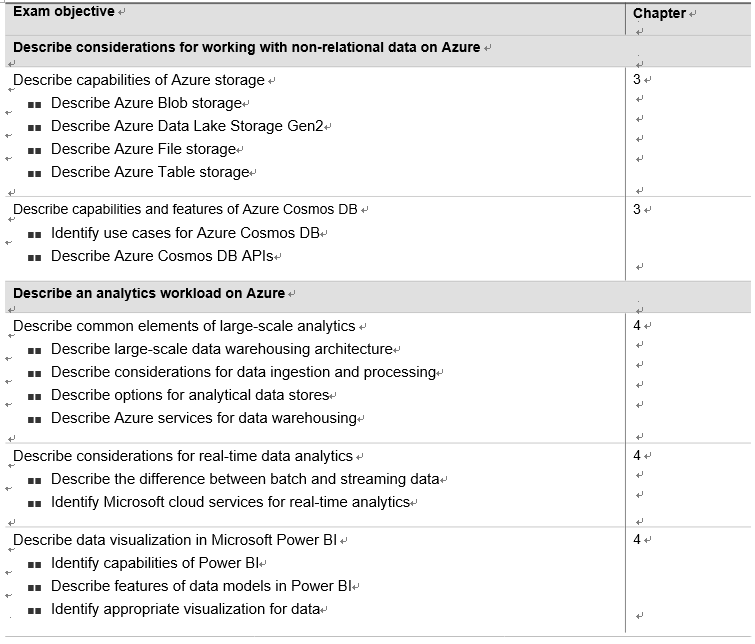Data Volume
Data volume refers to the amount of data that needs to be analyzed and processed. Access to larger datasets can provide just as many headaches as it does clarity. Large datasets that are stored in databases that use bad design practices or queried by poorly written queries can cause applications to perform so badly that they come to a screeching halt. Traditional relational databases such as SQL Server or Azure SQL Database can be used for large data warehouses if they are leveraging a well-thought-out data model design with appropriate indexes and partitions, and applications are reading data with well-written queries. However, there is a limit to the amount of data that traditional database technologies and processing patterns can handle.
It is critical that the right data storage technologies and processing patterns are chosen in the design phase, especially if the datasets are going to be large in volume. Even the most properly tuned relational databases will begin to perform poorly after a certain size threshold. Symmetric multiprocessing, or SMP, systems such as SQL Server and Azure SQL Database are characterized by a single instance of an RDBMS that shares all the resources (CPU, memory, and disk). SMP systems can scale up to serve gigabytes (GB) and terabytes (TB) worth of data but hit a wall when the resource limits are hit. Massively parallel processing, or MPP, systems such as Azure Synapse Analytics dedicated SQL pool are designed to process large datasets. MPP systems are designed to be distributed parallel processing solutions, meaning they are not only able to scale up by adding more compute resources but can also scale out by adding more nodes to the system.
TIP MPP databases can be less performant and more costly than an SMP database when the dataset size is small. Consider using an SMP database if the data warehouse is never going to be more than 1TB and queries perform more lookups than large-scale aggregations.
You can think of data processing differences between SMP and MPP systems as how a grocery store goes about restocking its shelves. One employee of a store can efficiently restock shelves in a single aisle in a relatively short amount of time. However, restocking every aisle in a large store that has many aisles can take hours or even days if there is only one employee available for the task. In most cases, floor managers at a store will assign aisles to different employees. This drastically reduces the amount of time it takes to restock an entire store since there are many employees restocking shelves in parallel. This is how MPP systems such as Azure Synapse Analytics, Azure HDInsight, and Azure Databricks operate. The underlying architecture includes a driver/control node that divides large processing tasks into multiple operations and assigns them to different worker/compute node. Data is stored in a distributed file system that is split into chunks to be processed by the different worker nodes.
The ability to separate compute and storage allows MPP systems to scale very quickly. Adding nodes to an Azure Synapse Analytics dedicated SQL pool or an Azure Databricks cluster can happen without having to repartition data. Data is instead persisted in a distributed file system that shards it into partitions or distributions to optimize the performance of the system. Cloud-based object storage such as Azure Blob Storage or Azure Data Lake Storage Gen2 are generally used for the basis of distributed file systems. These technologies are highly scalable by design, making it easy to store massive amounts of data used by MPP systems.
While technologies such as Azure Synapse Analytics and Azure Databricks are ideal for modern data warehouse and data processing needs, they aren’t designed to store highly transactional data. Distributed file systems are great for storing data that will be used to create aggregated analysis but are not optimized for transactional data that is inserted or optimized one at a time. In cases where large amounts of transactional data, such as many thousands of transactions per second, need to be stored and globally distributed, it can be beneficial to use a NoSQL database such as Azure Cosmos DB to store transactional data. Transactional systems that use NoSQL databases have relaxed ACID properties in favor of schema flexibility and horizontal scale across multiple nodes. This provides similar benefits to MPP systems in that there are more compute resources available for processing and storage. The trade-off here is that the process of maintaining transaction consistency will fall on application developers since NoSQL databases do not strictly follow ACID properties.

